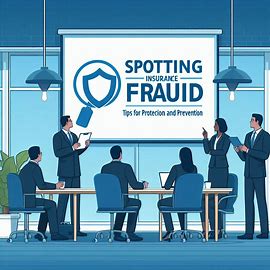Insurance fraud is a growing concern in today’s financial landscape, impacting both individuals and insurance companies. With high stakes involved, it is essential to be aware of how to spot potential fraud and take steps to protect yourself. In this comprehensive guide, we will delve into the world of insurance fraud, highlighting common types, warning signs, and effective prevention strategies.
Understanding Insurance Fraud
Insurance fraud occurs when an individual or entity deceives an insurance company to receive benefits or payments that they are not entitled to. This can take many forms, including false claims, inflated damages, and even staging accidents. The National Insurance Crime Bureau (NICB) estimates that fraud accounts for billions of dollars in losses each year, driving up premiums for honest policyholders.
Common Types of Insurance Fraud
1. Health Insurance Fraud
Health insurance fraud can involve billing for services not rendered, falsifying diagnoses, or performing unnecessary procedures to increase claims. Patients may also conspire with providers to submit fraudulent claims.
2. Auto Insurance Fraud
This type of fraud often involves staged accidents, where individuals intentionally cause or exaggerate an accident to collect insurance payouts. It can also include “phantom” passengers—people who claim to be injured but were not present during the accident.
3. Homeowners Insurance Fraud
Homeowners may inflate the value of lost or damaged property, claim items that were never owned, or even stage a burglary to collect on a policy.
4. Workers’ Compensation Fraud
Employees may exaggerate injuries or claim benefits for non-work-related injuries. Employers may also engage in fraud by misclassifying employees or failing to report injuries.
Warning Signs of Insurance Fraud
Recognizing the red flags associated with insurance fraud can help you take preventive measures. Here are some key warning signs:
1. Vague or Inconsistent Details
If the details of a claim are unclear or inconsistent, it may indicate fraud. Be cautious if the claimant struggles to provide specific information or frequently changes their story.
2. Unusual Behavior
Watch for suspicious behavior, such as overly aggressive claims or a sense of urgency to settle quickly. Fraudsters often want to avoid scrutiny and pressure others into compliance.
3. Exaggerated Claims
Look for claims that seem excessive or inflated, particularly in relation to the circumstances. For instance, a minor car accident should not lead to a significant claim for physical injuries.
4. Pressure from Claimants
If a claimant pressures you to accept a settlement or discourages you from contacting authorities, this is a red flag. Legitimate claims should stand up to scrutiny.
Tips for Protection and Prevention
1. Educate Yourself
Understanding the types of insurance fraud and common warning signs is your first line of defense. Familiarize yourself with your insurance policy and know what is covered.
2. Verify Information
Always verify information provided by claimants. If you notice discrepancies or feel something is off, investigate further before proceeding.
3. Document Everything
Keep thorough records of all communication, documents, and claims. This documentation will serve as a crucial reference if fraud is suspected.
4. Report Suspicion
If you suspect insurance fraud, report it to your insurance company and local authorities. Providing information can help prevent further fraud and protect others.
5. Utilize Technology
Many insurance companies are now employing advanced technology and data analytics to identify suspicious claims. Encourage your insurer to adopt such technologies for better detection.
6. Consult a Professional
If you have concerns or feel overwhelmed, consider consulting a fraud investigator or legal professional. They can provide guidance and support throughout the process.
Conclusion
Spotting insurance fraud is crucial for protecting your interests and those of others. By understanding common types of fraud, recognizing warning signs, and implementing effective prevention strategies, you can significantly reduce the likelihood of falling victim to this crime. Stay vigilant, educate yourself, and always trust your instincts when it comes to suspicious claims.
Frequently Asked Questions (FAQs)
1. What should I do if I suspect insurance fraud?
If you suspect insurance fraud, report your suspicions to your insurance company and local law enforcement. Provide as much detail as possible to aid in the investigation.
2. How can I protect myself from becoming a victim of insurance fraud?
Educate yourself about the types of fraud, verify information, document everything, and be cautious of claims that seem excessive or vague.
3. Are there laws against insurance fraud?
Yes, insurance fraud is illegal and can result in criminal charges, fines, and imprisonment for those convicted.
4. Can I be penalized for making a false claim?
Yes, submitting a false claim is considered insurance fraud and can lead to severe penalties, including legal action and loss of coverage.
5. How prevalent is insurance fraud?
Insurance fraud is a significant issue, with estimates suggesting that it costs the industry billions annually, leading to increased premiums for honest policyholders.
6. What are the consequences for those committing insurance fraud?
Individuals convicted of insurance fraud may face legal penalties, including fines, restitution, and imprisonment, as well as the loss of insurance coverage.
